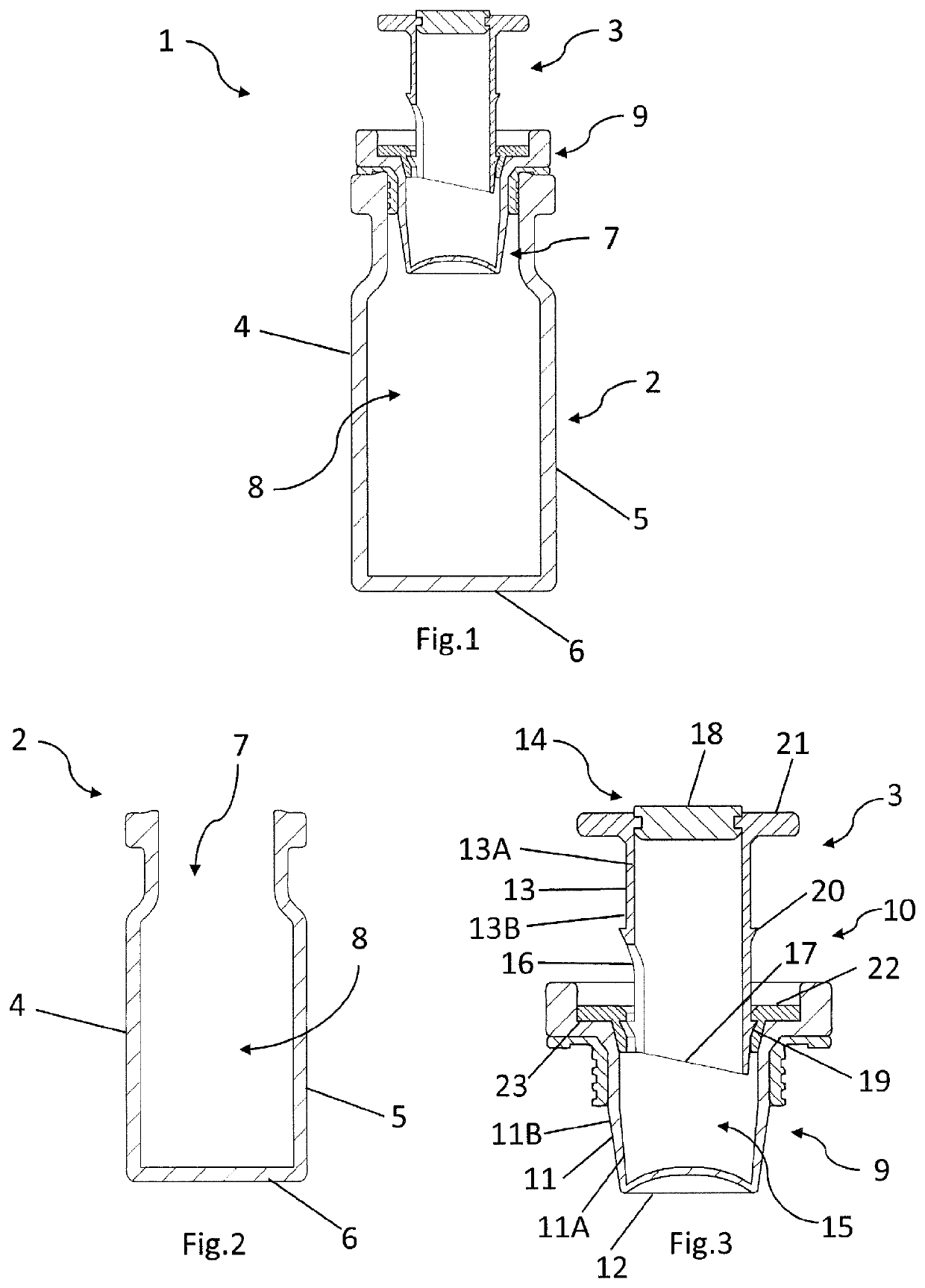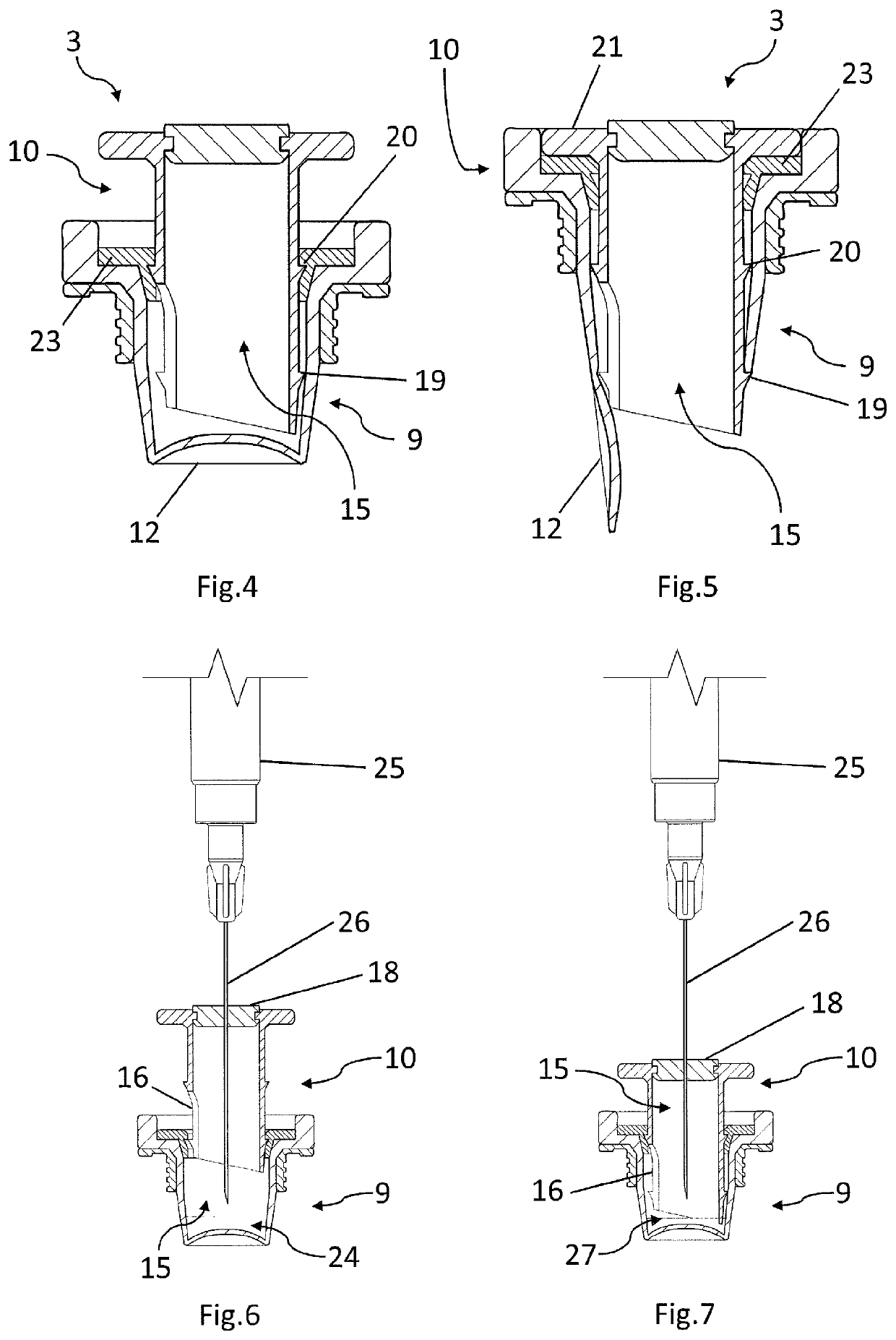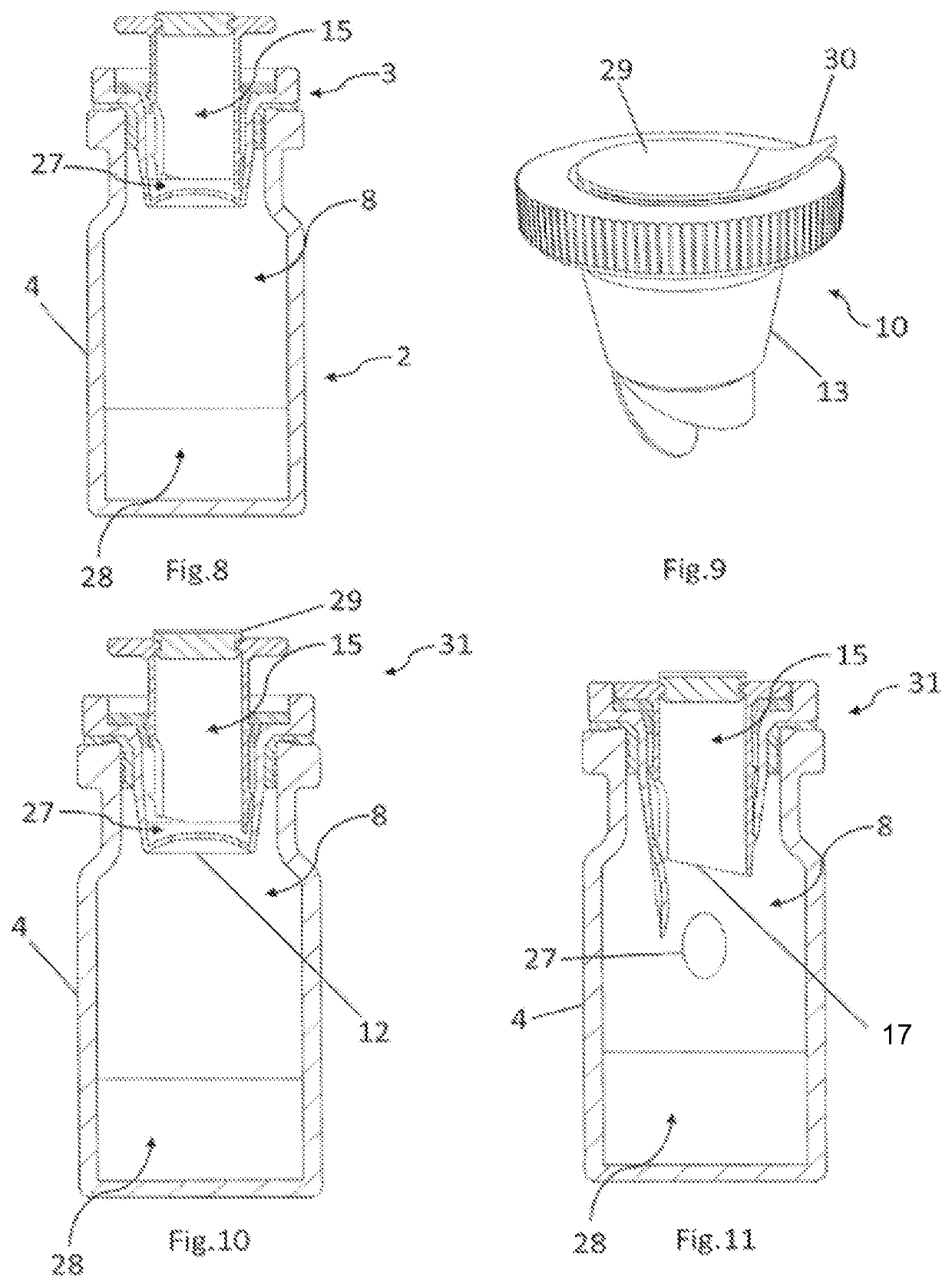Container and closure
a container and closure technology, applied in the field of containers, can solve the problems of inability to safely deploy, unstable active agents, waste of process, etc., and achieve the effect of maintaining the sterility of the injection port and safe deploymen
- Summary
- Abstract
- Description
- Claims
- Application Information
AI Technical Summary
Benefits of technology
Problems solved by technology
Method used
Image
Examples
Embodiment Construction
[0077]A container 1 for use in dispensing one or more active agents as shown in FIG. 1 comprises a vial 2 and a vial closure 3. The vial 2, as shown in FIG. 2, comprises a vial body 4 comprising a generally cylindrical side wall 5 extending upwards from a generally circular base 6. A generally cylindrical opening 7 is provided opposite said circular base 6. Together the base 6 and the cylindrical side wall 7 define an internal vial chamber 8. The vial body 4 is made from glass or plastics, or any other suitable material.
[0078]The vial closure 3, as shown in FIG. 3, comprises a vial closure body 9 and a vial closure lid 10. The vial closure body 9 comprises a generally cylindrical closure wall 11 dimensioned and configured for an interference fit within the opening 7 of the vial body 4 when the vial closure 3 is fully inserted into said opening 7. The closure wall 11 is typically made of a resilient plastics material. A generally circular closure base 12 extends across the end of the...
PUM
| Property | Measurement | Unit |
|---|---|---|
| area | aaaaa | aaaaa |
| solution | aaaaa | aaaaa |
| structures | aaaaa | aaaaa |
Abstract
Description
Claims
Application Information
 Login to View More
Login to View More - R&D
- Intellectual Property
- Life Sciences
- Materials
- Tech Scout
- Unparalleled Data Quality
- Higher Quality Content
- 60% Fewer Hallucinations
Browse by: Latest US Patents, China's latest patents, Technical Efficacy Thesaurus, Application Domain, Technology Topic, Popular Technical Reports.
© 2025 PatSnap. All rights reserved.Legal|Privacy policy|Modern Slavery Act Transparency Statement|Sitemap|About US| Contact US: help@patsnap.com



